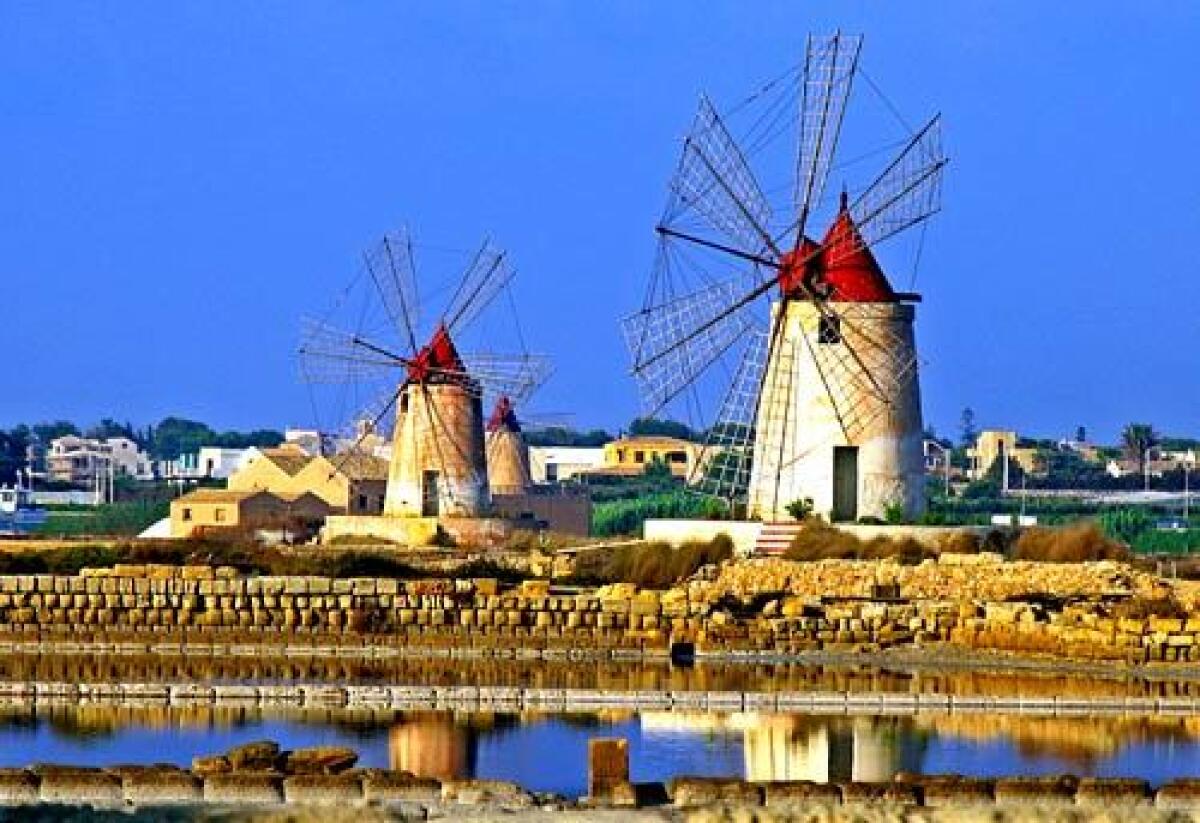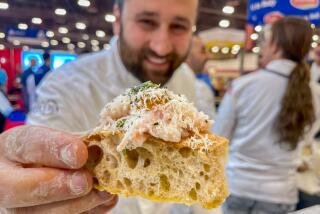Sicilian pastry shop: Sweet meets holy in Erice

Reporting from Erice, Italy — The glass case at Maria Grammatico’s Pasticceria del Convento in the hilltop town of Erice displays treasures worthy of a Swiss bank.
Cannoli, filled with fresh ricotta, is just the best known variety. When you make a closer study, you discover a world of confections as beautiful to look at as they are sweet to eat: green cassata cakes made of almond, sugar, vanilla, buttermilk curd and candied fruit; perfectly formed marzipan prickly pears and tomatoes; lemon-flavored cuscinetti (small fried pastries); buccellati (hard, baked cookies) twisted around fig, cinnamon and clove comfit; an almond and egg white confection known as sospiri (pastry made from sponge cake); and the endearing almond-citron baby lambs that arrive on Good Friday for Erice’s famous I Misteri celebration.
I sought out this particular pasticceria because I’d read “Bitter Almonds,” part memoir, part cookbook, co-written by Grammatico and American-born writer Mary Taylor Simeti. It’s set in the sad, lean years after World War II and tells the story of Grammatico’s childhood in the Erice orphanage of San Carlo where she learned the art of Sicilian pastry making.
She was 11 when she entered the orphanage, run by cloistered nuns who supported the institution by selling their pastry creations through a small revolving portal. The little girls spent their days painting marzipan apricots and cherries, making lemon preserves, shelling almonds with a hammer and stone. The almonds, grown in the arid fields around Erice, were ground to a pulp and used in place of flour, giving the pastries their special flavor and consistency.
The rest of the time, the orphans read their missals, and went to Mass and confession. When there was a funeral in town, they preceded the coffin to the cemetery halfway down the mountain, a long line of girls walking two by two in black dresses and veils. It wasn’t a happy life, and they had to stay at the orphanage until they turned 21.
When Grammatico left in 1962, she took little more than her knowledge of Sicilian pastry making with her.
Poised on top of fabled Mt. Eryx, Erice now attracts tourists who wander its medieval streets and gaze over its ramparts to the wild coast of western Sicily 2,400 feet below. On Via Guarnotti, I found the Church of San Carlo with its beautiful majolica tile floor, now a cultural center. The smell of baking led me on to Pasticceria del Convento, where I had a hard time deciding what to buy.
Outside the shop in the Piazza San Domenico I opened my little bag and tasted my first bocconcino, an orphan’s epiphany made of sugar, almonds and lemon.
More to Read
Sign up for Essential California
The most important California stories and recommendations in your inbox every morning.
You may occasionally receive promotional content from the Los Angeles Times.










